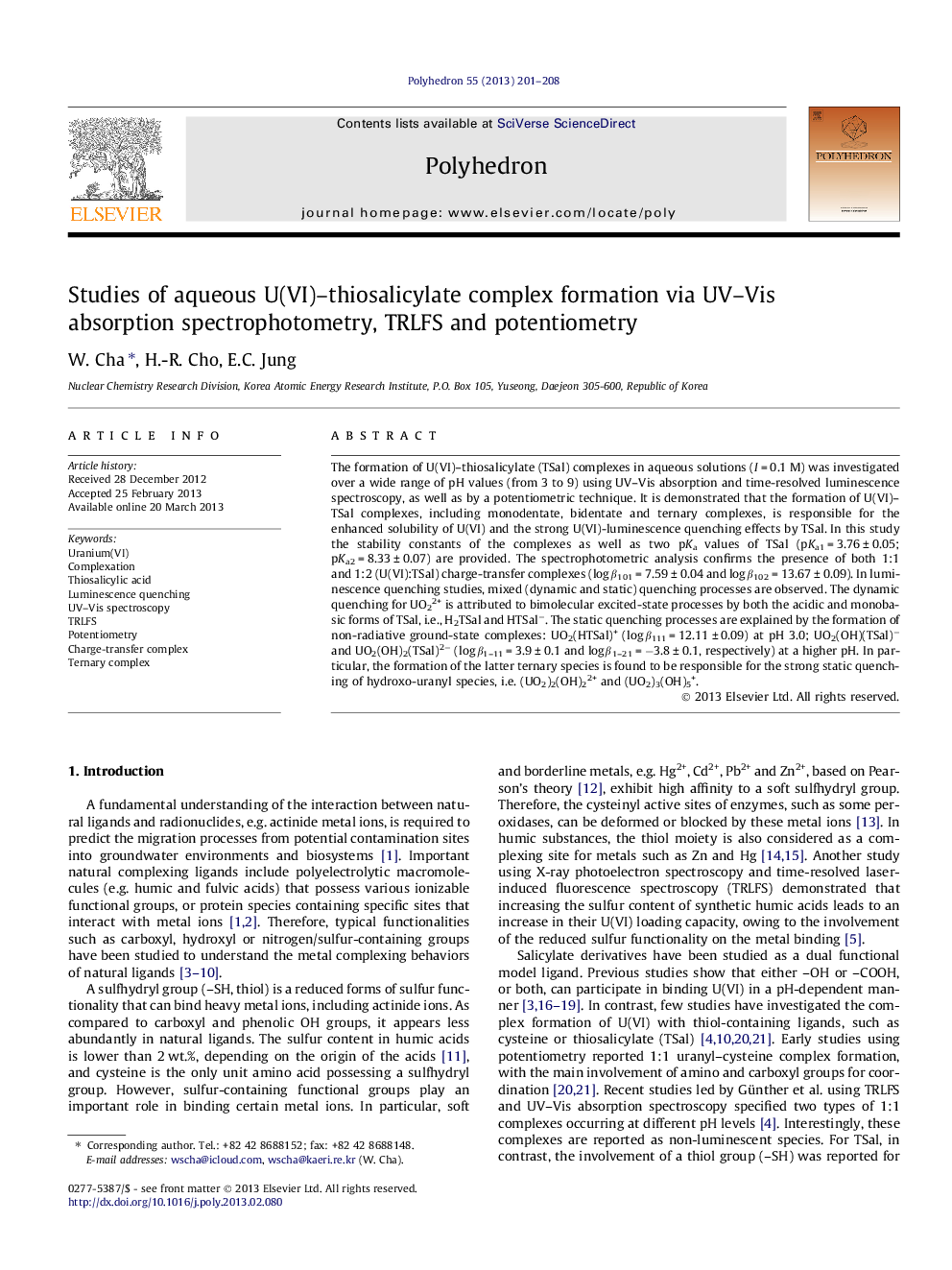| Article ID | Journal | Published Year | Pages | File Type |
|---|---|---|---|---|
| 1338441 | Polyhedron | 2013 | 8 Pages |
The formation of U(VI)–thiosalicylate (TSal) complexes in aqueous solutions (I = 0.1 M) was investigated over a wide range of pH values (from 3 to 9) using UV–Vis absorption and time-resolved luminescence spectroscopy, as well as by a potentiometric technique. It is demonstrated that the formation of U(VI)–TSal complexes, including monodentate, bidentate and ternary complexes, is responsible for the enhanced solubility of U(VI) and the strong U(VI)-luminescence quenching effects by TSal. In this study the stability constants of the complexes as well as two pKa values of TSal (pKa1 = 3.76 ± 0.05; pKa2 = 8.33 ± 0.07) are provided. The spectrophotometric analysis confirms the presence of both 1:1 and 1:2 (U(VI):TSal) charge-transfer complexes (log β101 = 7.59 ± 0.04 and log β102 = 13.67 ± 0.09). In luminescence quenching studies, mixed (dynamic and static) quenching processes are observed. The dynamic quenching for UO22+ is attributed to bimolecular excited-state processes by both the acidic and monobasic forms of TSal, i.e., H2TSal and HTSal−. The static quenching processes are explained by the formation of non-radiative ground-state complexes: UO2(HTSal)+ (log β111 = 12.11 ± 0.09) at pH 3.0; UO2(OH)(TSal)− and UO2(OH)2(TSal)2− (log β1–11 = 3.9 ± 0.1 and logβ 1–21 = −3.8 ± 0.1, respectively) at a higher pH. In particular, the formation of the latter ternary species is found to be responsible for the strong static quenching of hydroxo-uranyl species, i.e. (UO2)2(OH)22+ and (UO2)3(OH)5+.
Graphical abstractMonodentate, bidentate and ternary uranium(VI)–thiosalicylate(TSal) complexes are identified. The uranium solubility increases in the presence of TSal. The charge-transfer band absorption by UO2(TSal)0 and UO2(TSal)22− is analyzed using UV–Vis spectrophotometry. The U(VI)-luminescence quenching effects are analyzed using TRLFS. The static quenching processes are also induced by UO2(HTSal)+, UO2(OH)(TSal)− and UO2(OH)2(TSal)2−.Figure optionsDownload full-size imageDownload as PowerPoint slide
